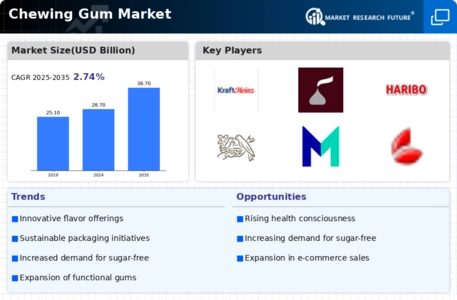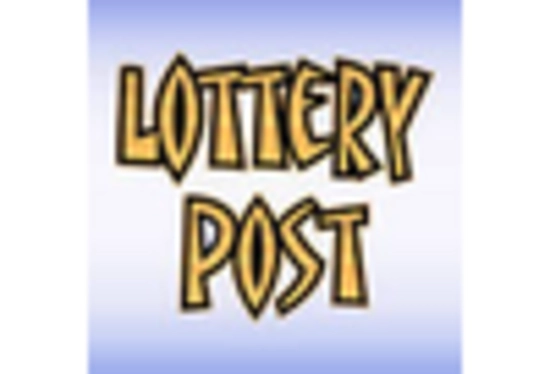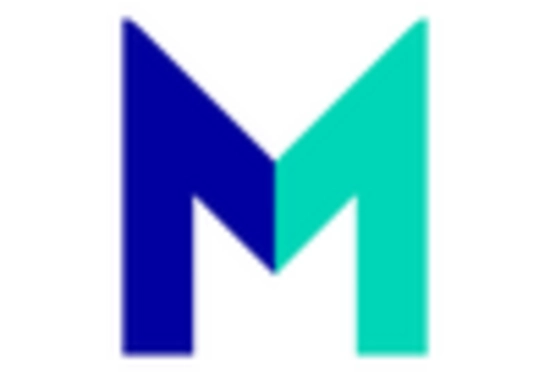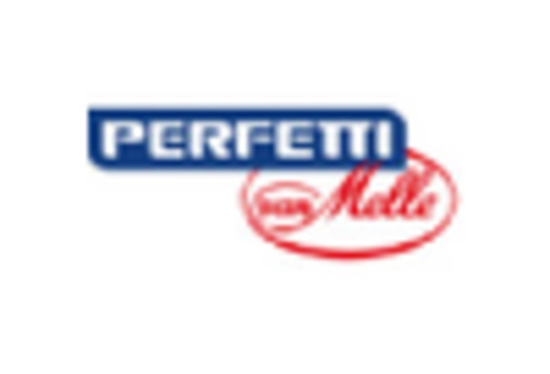Health and Wellness Trends
The Chewing Gum Market is increasingly influenced by health and wellness trends, as consumers become more health-conscious. There is a notable shift towards sugar-free and functional gums that provide additional benefits, such as improved oral health and stress relief. According to recent data, the sugar-free segment is projected to account for over 40% of the market share by 2026. This shift is driven by rising awareness of the negative health impacts of sugar consumption. Additionally, the incorporation of natural ingredients and organic certifications is becoming more prevalent, appealing to health-oriented consumers. As the demand for healthier alternatives continues to rise, the Chewing Gum Market is likely to adapt by expanding its offerings to include products that align with these wellness trends.
Innovative Flavors and Varieties
The Chewing Gum Market is experiencing a surge in innovative flavors and varieties, appealing to diverse consumer preferences. Manufacturers are increasingly introducing unique flavor combinations, such as exotic fruits and savory options, to attract adventurous consumers. This trend is supported by data indicating that flavor innovation can lead to a 20% increase in sales for new product launches. As consumers seek novel experiences, the demand for limited-edition flavors and seasonal offerings is likely to grow, further driving market expansion. The introduction of sugar-free and functional gums, which offer benefits like teeth whitening and breath freshening, also contributes to this dynamic. Consequently, the Chewing Gum Market is poised for growth as brands continue to experiment with flavors and formulations.
Rising Demand for Convenience Products
The Chewing Gum Market is witnessing a rising demand for convenience products, driven by fast-paced lifestyles and on-the-go consumption. Consumers increasingly prefer products that can be easily carried and consumed without the need for preparation. This trend is reflected in the growing popularity of single-serving packs and portable formats, which cater to busy individuals. Market data suggests that convenience-oriented packaging can enhance product visibility and accessibility, potentially increasing sales by up to 15%. Furthermore, the rise of e-commerce platforms has facilitated easier access to a variety of chewing gum products, allowing consumers to purchase their preferred brands with minimal effort. As convenience continues to be a priority for consumers, the Chewing Gum Market is likely to evolve to meet these changing preferences.
Sustainability and Eco-Friendly Practices
The Chewing Gum Market is increasingly focusing on sustainability and eco-friendly practices, as consumers become more environmentally conscious. There is a growing demand for biodegradable and recyclable packaging, as well as for gums made from natural and sustainable ingredients. Recent studies indicate that nearly 60% of consumers are willing to pay a premium for products that are environmentally friendly. This shift is prompting manufacturers to invest in sustainable sourcing and production methods, which can enhance brand loyalty and attract eco-conscious consumers. Additionally, companies that adopt transparent supply chains and promote their sustainability efforts are likely to gain a competitive edge in the market. As sustainability becomes a key consideration for consumers, the Chewing Gum Market is expected to adapt and innovate in response to these demands.
Influence of Social Media and Marketing Strategies
The Chewing Gum Market is significantly influenced by social media and innovative marketing strategies. Brands are leveraging platforms like Instagram and TikTok to engage with younger audiences, utilizing visually appealing content and influencer partnerships to promote their products. This approach has proven effective, as data shows that social media campaigns can increase brand awareness by up to 30%. Additionally, interactive marketing strategies, such as contests and user-generated content, foster community engagement and brand loyalty. As consumers increasingly rely on social media for product recommendations, the Chewing Gum Market is likely to continue evolving its marketing tactics to capture the attention of potential buyers. The integration of digital marketing with traditional advertising methods may further enhance the reach and impact of promotional efforts.


















Leave a Comment